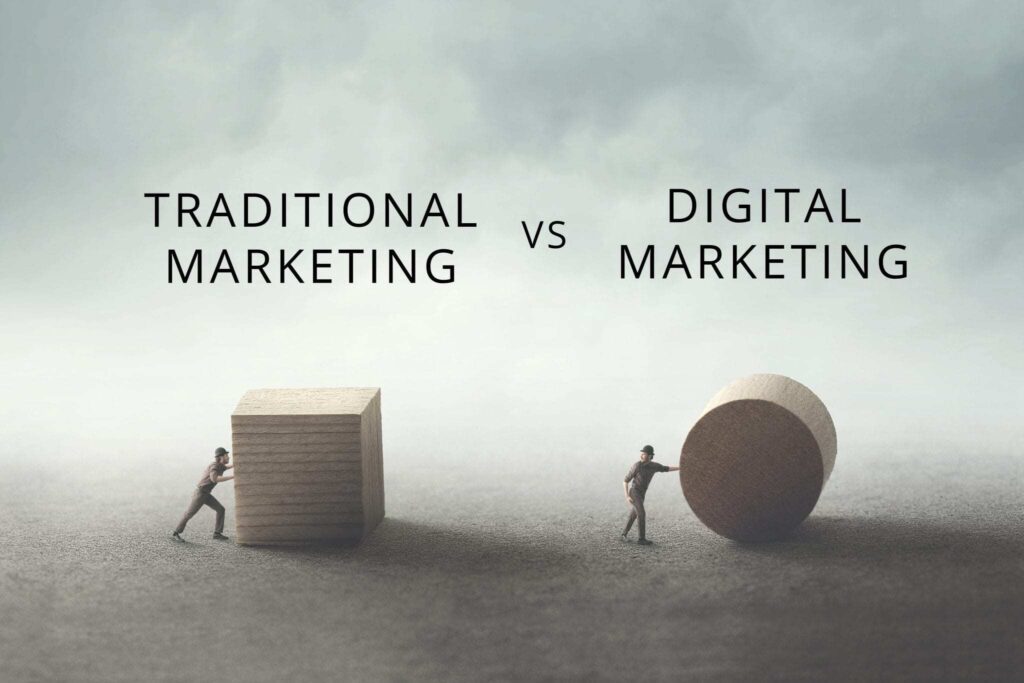Introduction

In an era dominated by digital marketing, where social media ads, influencer collaborations, and email campaigns take center stage, many businesses wonder if traditional marketing still holds value. While the marketing landscape has evolved, traditional marketing remains a powerful tool—especially when integrated with digital strategies. This article explores the relevance of traditional marketing in today’s digital age and how businesses can strike the right balance between old and new techniques.
Understanding Traditional Marketing
Traditional marketing refers to conventional advertising methods that predate the internet, including:
- Print Advertising (Newspapers, Magazines, Brochures)
- Television & Radio Ads
- Billboards & Outdoor Advertising
- Direct Mail (Flyers, Postcards, Catalogs)
- Networking & Events (Trade Shows, Seminars, Sponsorships)
Despite the digital revolution, these methods continue to be effective for many businesses, particularly those targeting local audiences or industries where personal interaction matters.
The Relevance of Traditional Marketing Today
- Credibility and Trust
Digital marketing is often met with skepticism due to fake ads, clickbait, and online scams. Traditional marketing, especially print and TV ads, carries a sense of credibility and trustworthiness. - Broad Audience Reach
While digital marketing thrives on precise targeting, traditional marketing reaches demographics that may not be as tech-savvy—such as older generations who still rely on newspapers, radio, and TV for information. - Stronger Brand Recall
Physical advertisements like billboards and direct mail provide a tangible experience, which can lead to better brand recall compared to digital ads that disappear with a click. - Less Competition in Certain Channels
Since many businesses focus solely on digital marketing, traditional channels have less competition, allowing brands to stand out more easily.
Integrating Traditional and Digital Marketing
Rather than choosing one over the other, businesses can create a hybrid marketing strategy that leverages the strengths of both approaches. Here’s how:
- QR Codes on Print Ads – Linking offline promotions to digital content enhances engagement.
- TV & Radio Ads with Social Media Hashtags – Encourages digital conversations around traditional campaigns.
- Direct Mail with Personalized URLs (PURLs) – Drives online traffic through unique links.
- Event Marketing with Live Streaming – Maximizes exposure by engaging both in-person and virtual audiences.
- Billboard Ads with Augmented Reality (AR) – Creates interactive experiences that bridge offline and online marketing.
Conclusion
Traditional marketing isn’t dead; it has simply evolved. By blending it with digital strategies, businesses can amplify their reach, build stronger brand trust, and engage audiences across multiple touchpoints. The key is to find the right balance and integrate both approaches for maximum impact.
Visit GoDigital360Degree for more blogs!


Leave a Reply